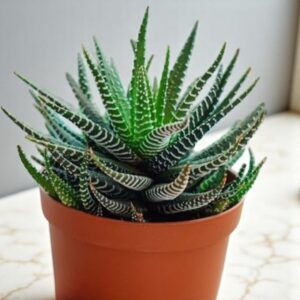PAN India free delivery, ORDERS above Rs. 299/-
0 Days
0 Hours
0 Mins
0 Secs
Shopping cart (4)
Subtotal: ₹306.00
Spend ₹0.00 to get free shipping
Congratulations! You've got free shipping.
Bergaranthus ( 1 piece )
₹200.00 Original price was: ₹200.00.₹99.00Current price is: ₹99.00.
In stock
Fast & Secure Shipping
3-7 business days
Free Shipping
Important Notice: When replacing damaged plants, you must record an unpacking video of the package within 12 hours of delivery.
🌿 All plants are shipped bare-rooted.
Your Payment is 100% Secure
Growing and caring for Bergaranthus:
- Lighting: Most Bergaranthus prefer bright, indirect sunlight. Place your plant near a south-facing window or provide it with bright, filtered light. Avoid exposing it to intense, direct sunlight for extended periods, as it can scorch the leaves.
- Pot selection: Choose a pot with drainage holes to ensure proper drainage. Succulents require well-draining soil, so a container with good drainage is crucial to prevent waterlogged roots.
- Soil: Use a well-draining succulent or cactus potting mix. These mixes are specifically formulated to promote good drainage and prevent excess moisture retention. If unavailable, you can create your own mix by combining regular potting soil with perlite or coarse sand.
- Watering: Bergaranthus are adapted to arid conditions and have low water needs. Allow the soil to dry out completely between waterings. When you water, do so thoroughly, ensuring the water reaches the root zone, and allow excess water to drain away. Avoid overwatering, as it can lead to root rot.
- Temperature: Most Bergaranthus thrive in average to warm temperatures, generally between 65-80?F (18-27?C). However, different species or cultivars may have specific temperature preferences, so it’s important to research the specific needs of your succulent.
- Humidity: Bergaranthus prefer low humidity levels. They are adapted to arid environments and can tolerate drier air conditions.
- Fertilization: Fertilize your Bergaranthus sparingly during the growing season, typically spring and summer. Use a balanced, diluted fertilizer specifically formulated for succulents. Follow the package instructions for proper dilution and frequency, as overfertilization can harm the plant.
- Propagation: Bergaranthus can be propagated through various methods such as stem cuttings, leaf cuttings, or offsets (small plantlets that grow from the base of the main plant). Each propagation method has specific requirements, so it’s important to research the appropriate technique for the particular succulent you have.
- Pruning: Prune your Bergaranthus as needed to maintain its shape and remove any dead, damaged, or diseased leaves or stems. This can also help promote branching and compact growth.
- Pests and diseases: While Bergaranthus are generally resistant to pests and diseases, they can occasionally be affected by common issues such as mealybugs, aphids, or fungal diseases. Inspect your plant regularly and take appropriate measures if any infestations or diseases are detected.
- You can also visit our store to buy succulents online , buy succulent planters, buy fertilizers online with various types of indoor plants and hardy succulents . You can refer to our informational site for more details about plant varieties.Click here for agricultural knowledge information.
Related products
Sale!
variegated jade plant ( 1 piece )
Sale!
Sale!
Haworthia reinwardtii
Sale!
Sale!







